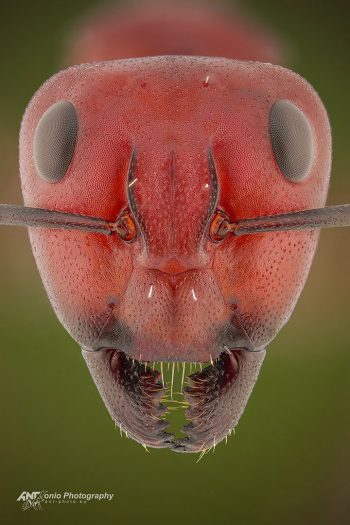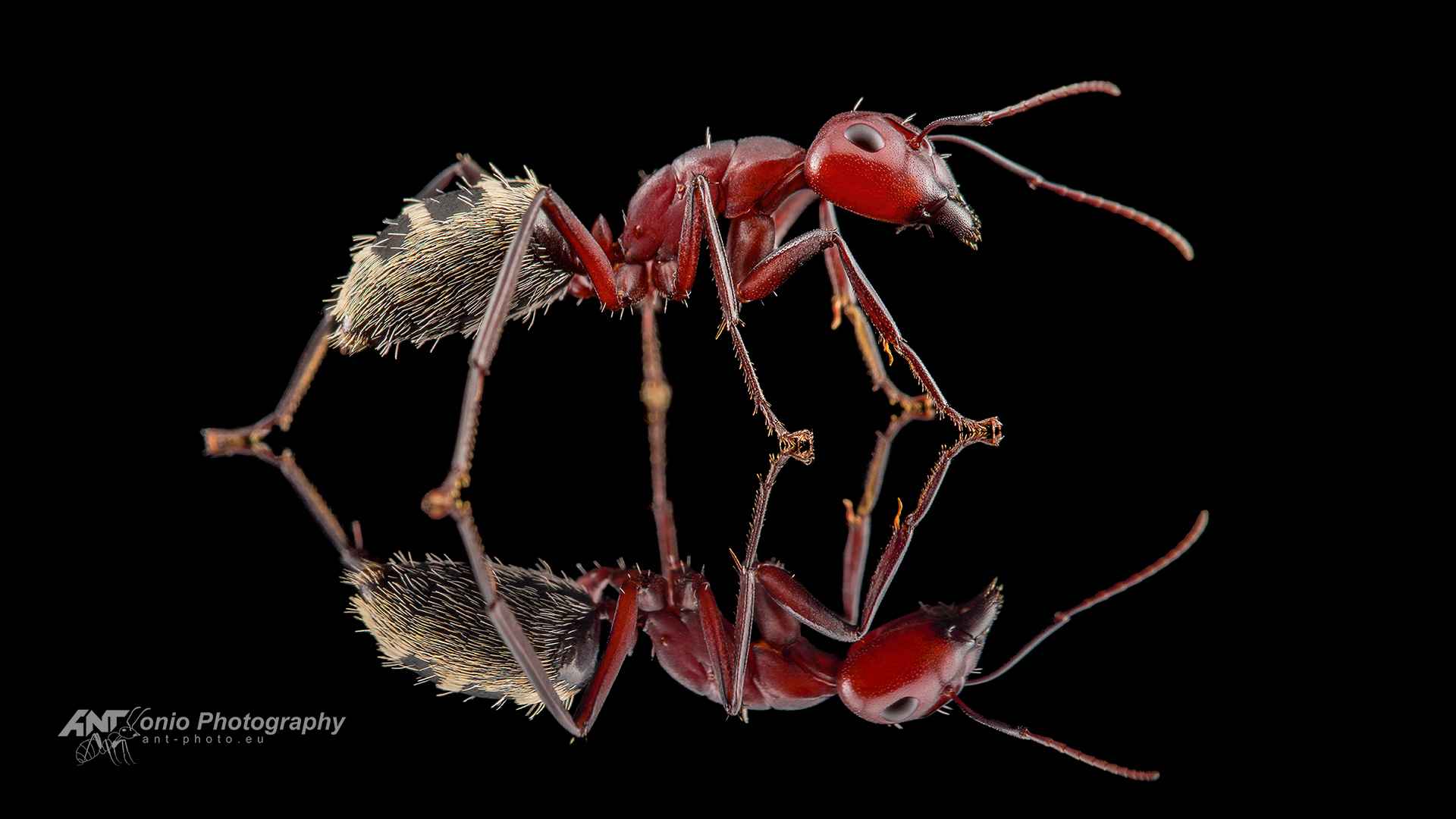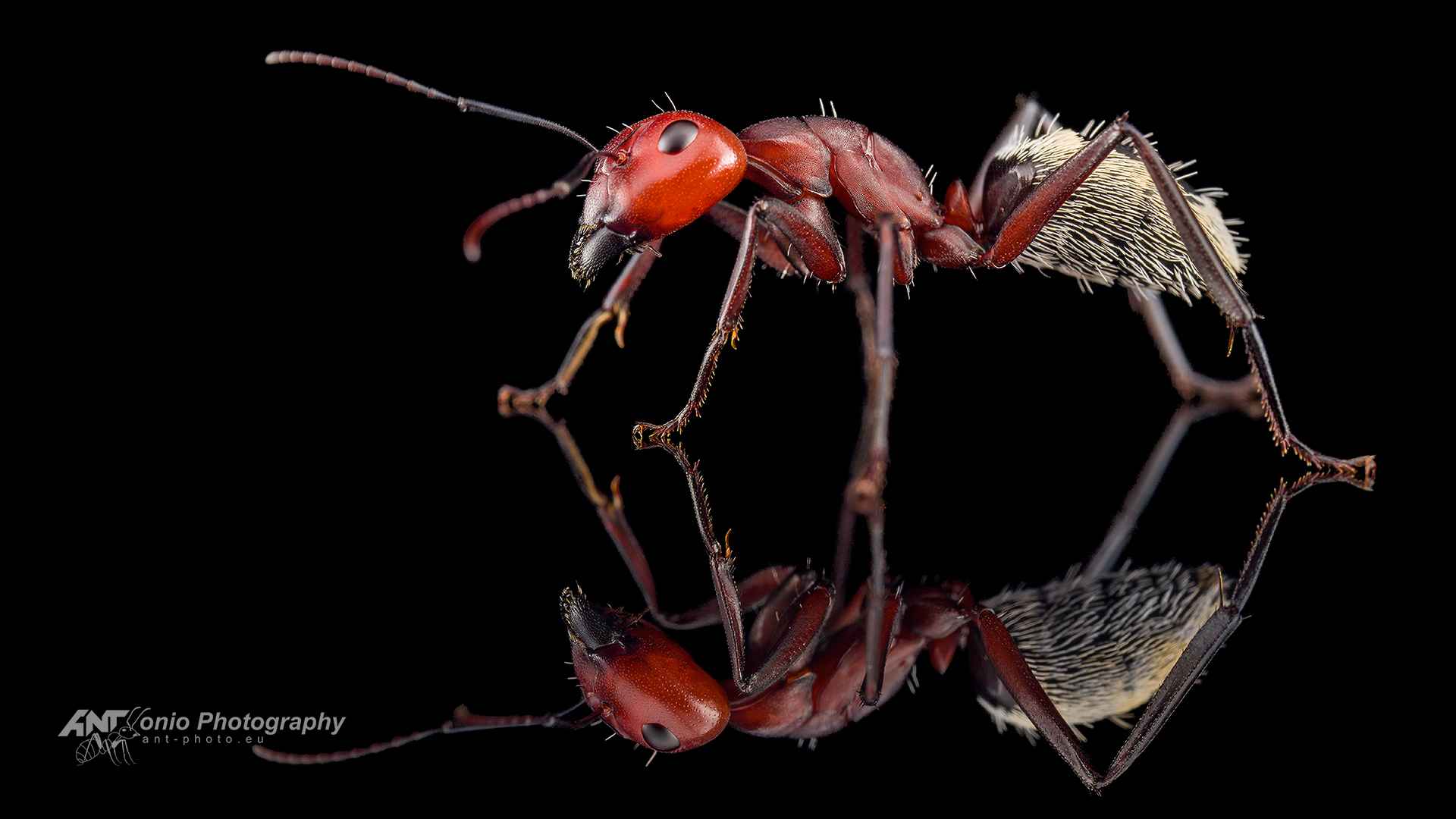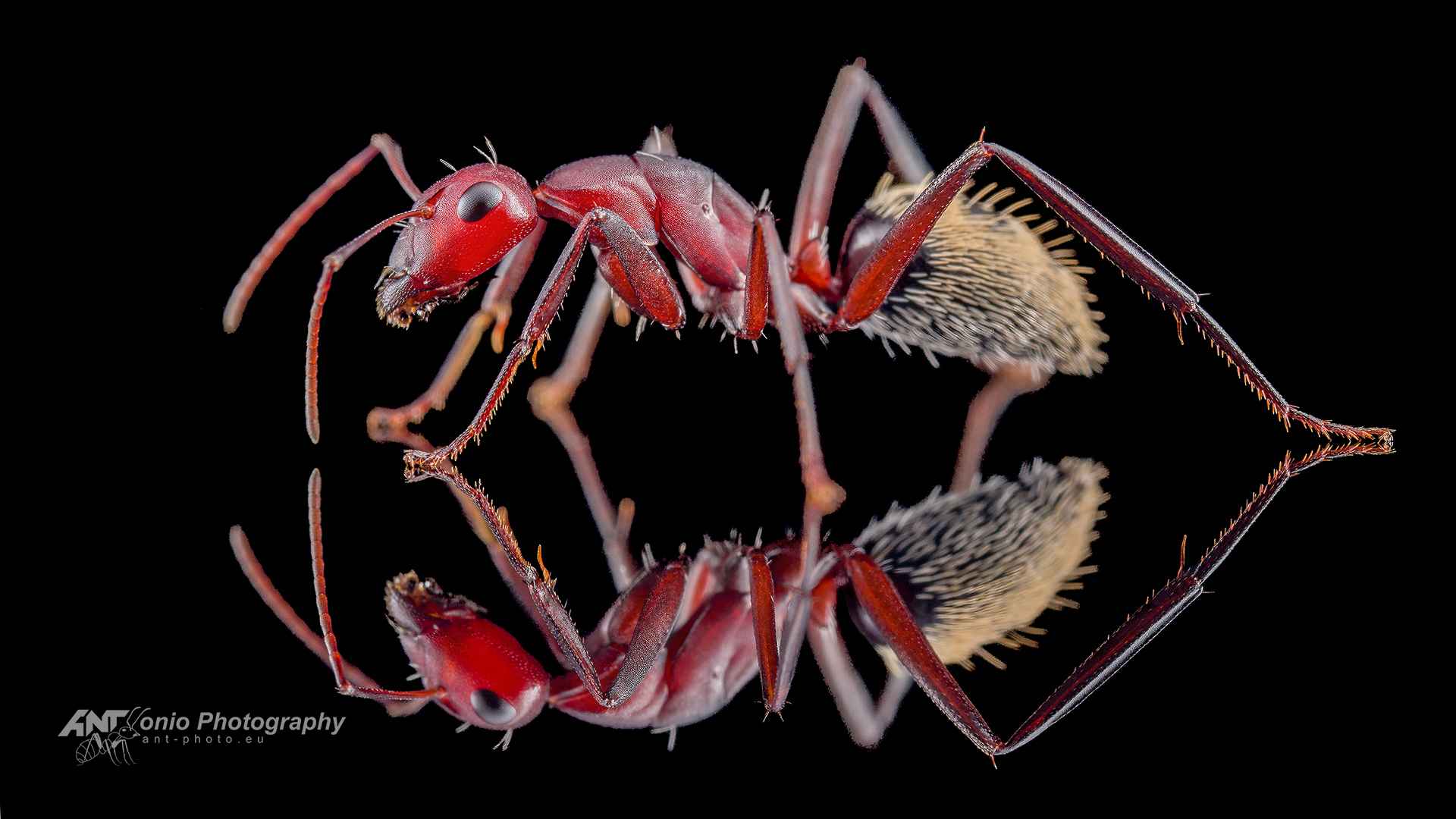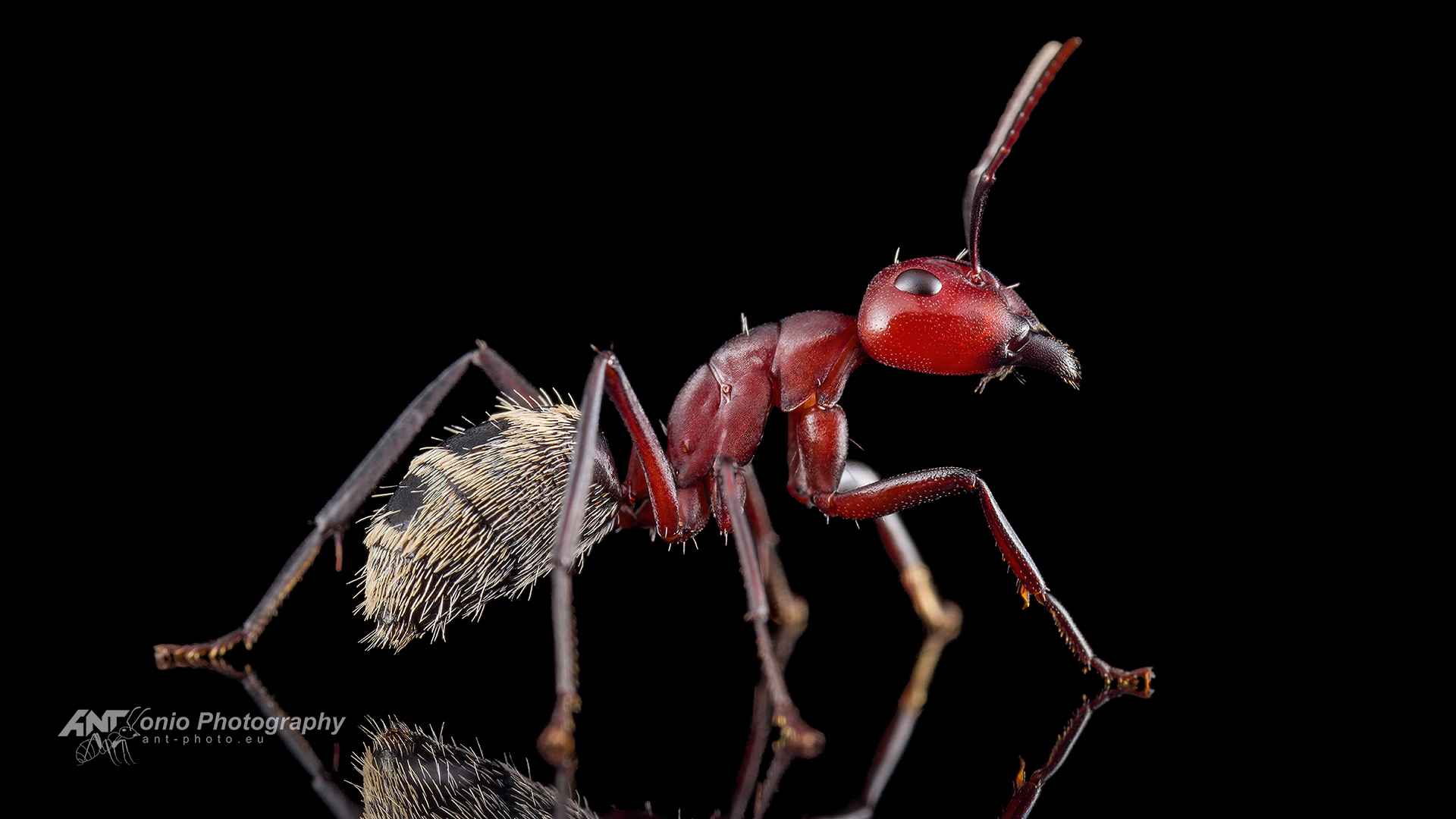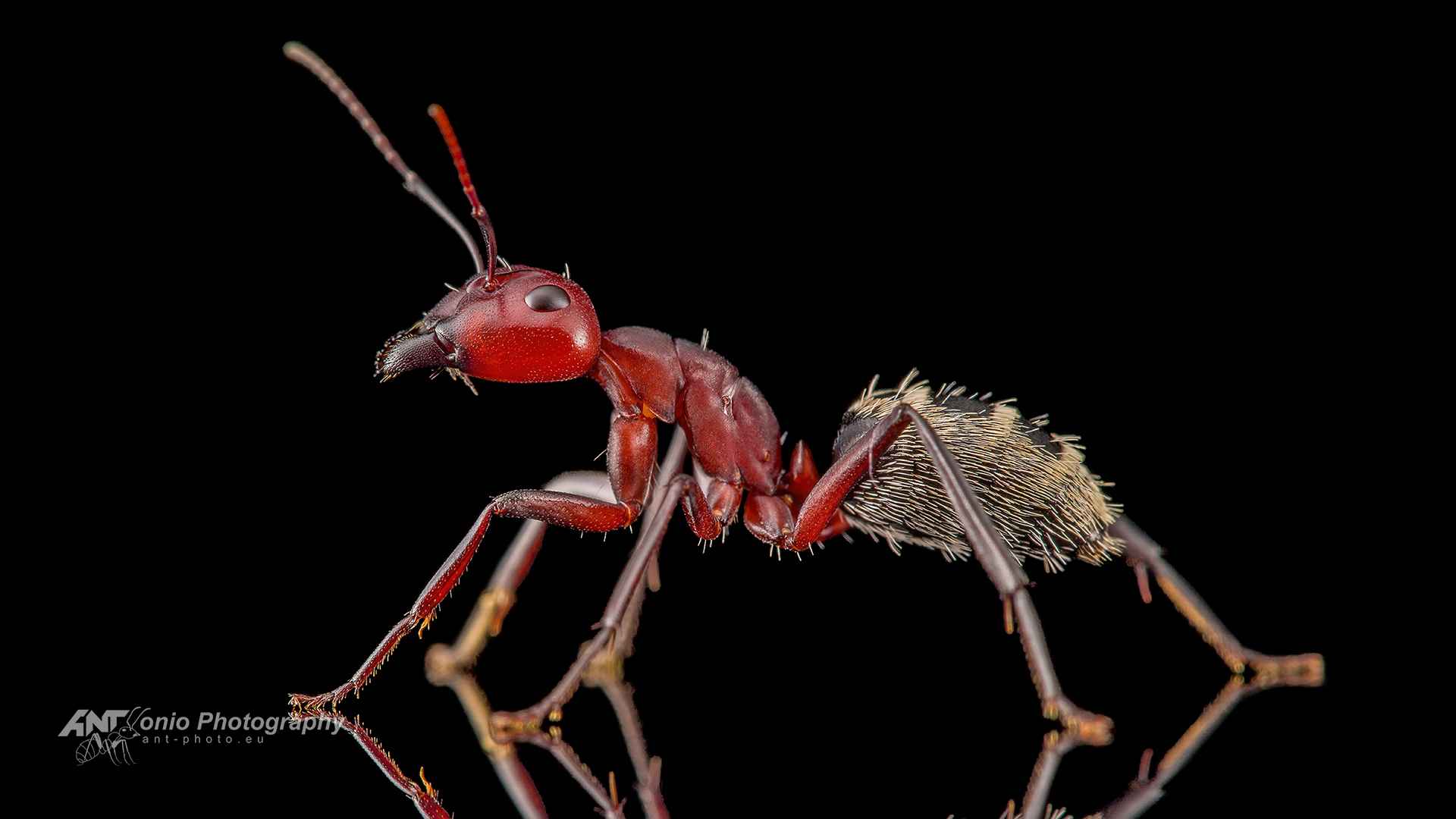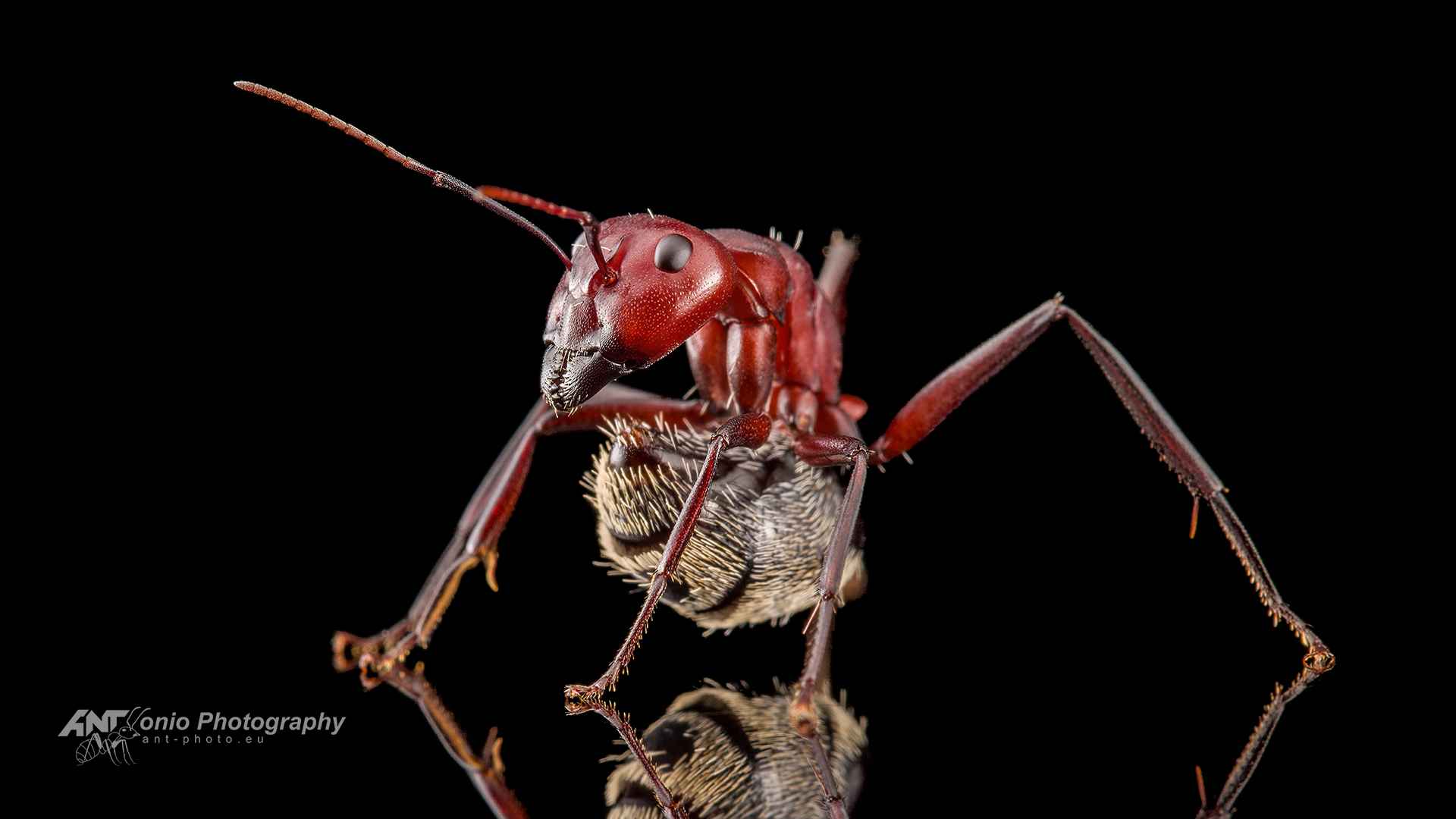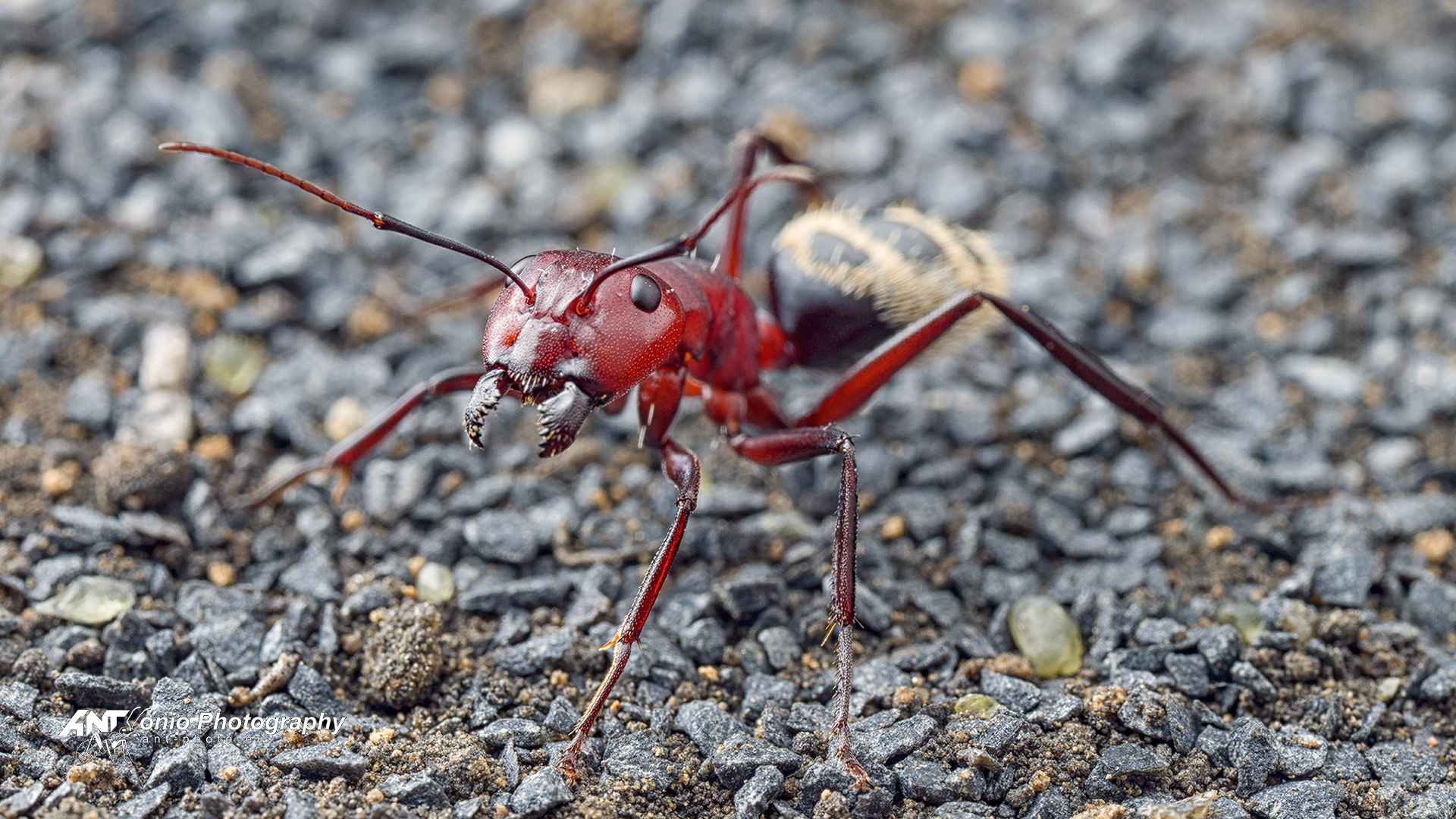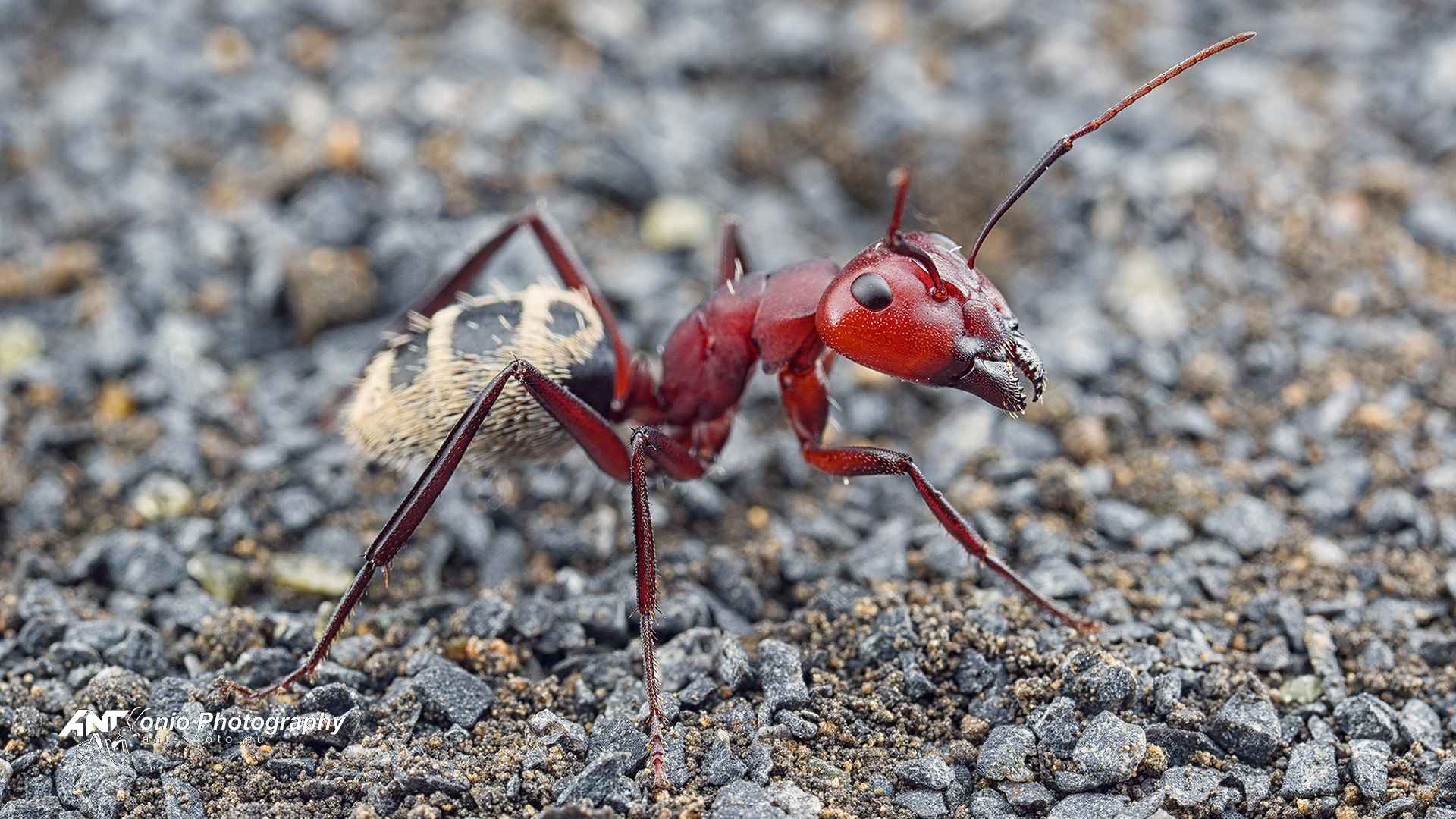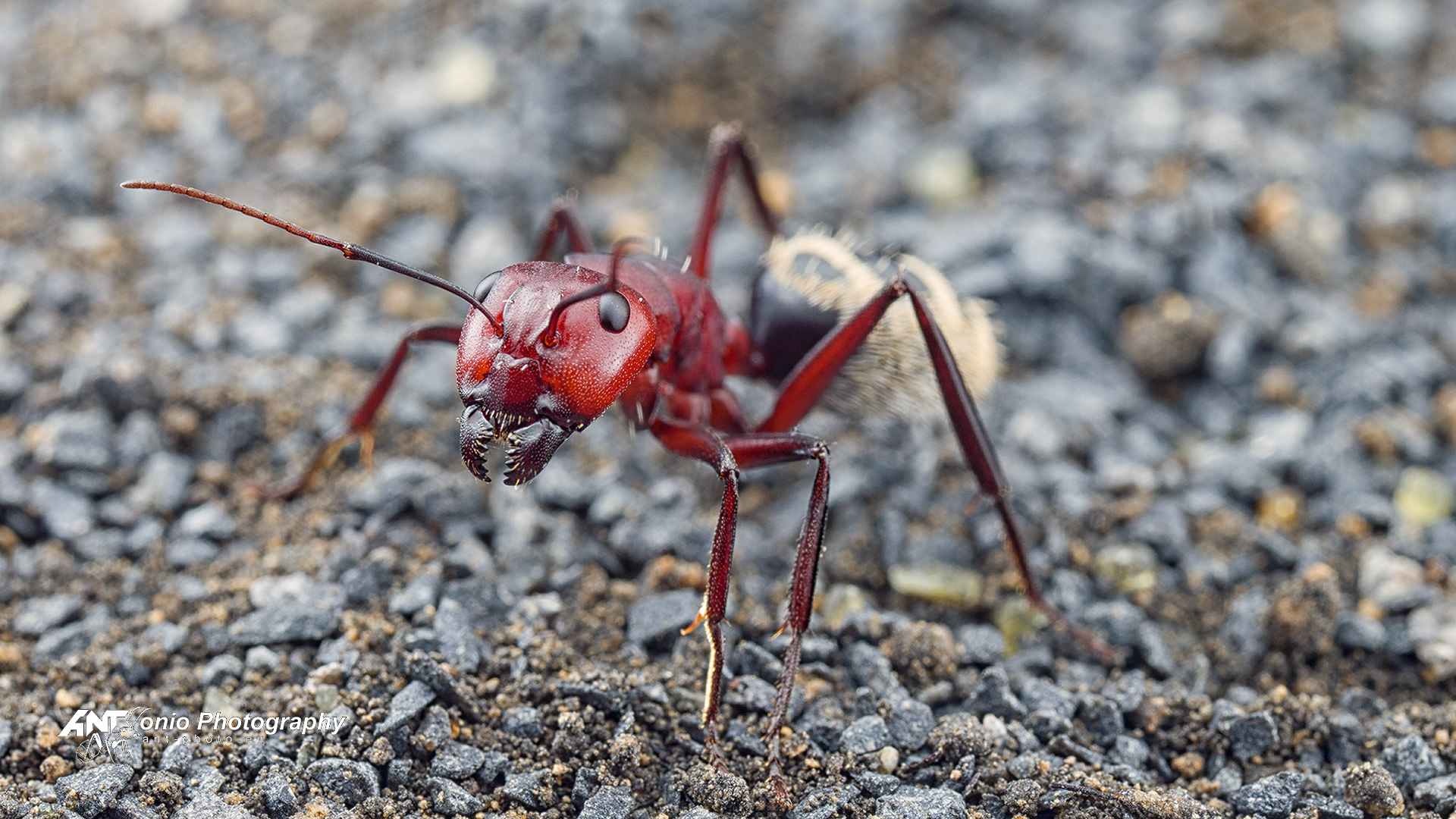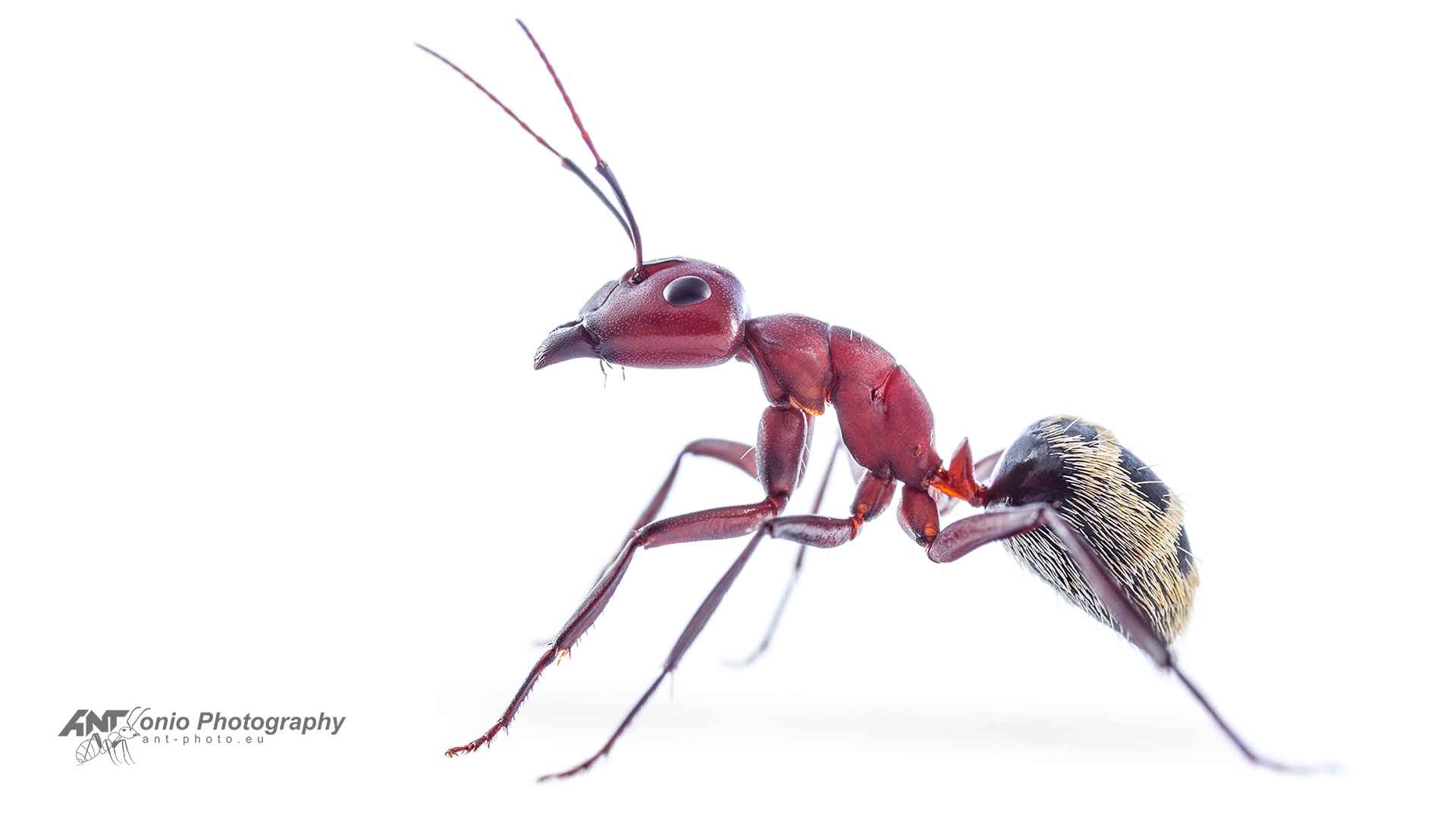Camponotus detritus
Namib Desert dune ant
| Rodzina | Family: | Formicidae |
| Podrodzina | Subfamily: | Formicinae |
| Plemię | Tribe: | Camponotini |
| Rodzaj | Genus: | Camponotus |
| Gatunek | Species: | C. detritus |
Camponotus detritus photo gallery
Opis / Description of Camponotus detritus
![]() Camponotus detritus to gatunek występujący w Namibii i Republice Południowej Afryki. W centralnej części pustyni Namib jest dominującym ekologicznie gatunkiem mrówki. Gniazduje w najgorętszych i najbardziej nieprzyjaznych miejscach, gnieżdżąc się wśród korzeni nielicznych roślin. Korytarze gniazda sięgają około 40 cm w głąb gleby i zawierają w sobie sporo drobnej materii organicznej (detrytusu), czemu mrówki te zawdzięczają swą nazwę. Z racji niestabilności gniazd budowanych na wydmach, mrówki te zazwyczaj wykopują do czterech gniazd w niedużej odległości od siebie, by w razie zniszczenia obecnie zajmowanego, mogły się sprawnie przeprowadzić. Pożywienie oraz niezbędną wodę czerpią głównie ze spadzi pluskwiaków (zazwyczaj czerwców), żywią się także martwymi owadami. W kolonii Camponotus detritus znajduje się zawsze wyłącznie jedna królowa. Robotnice tego gatunku różnią się między sobą wielkością – najmniejsze z nich osiągają 7, największe 16 mm długości. Z racji swojego występowania, mrówki te są wyjątkowo odporne na wysokie temperatury. Chodząc wysoko na odnóżach, unikają najwyższych temperatur (podczas gdy na poziomie gleby może wynosić ona do 60°C, 5 mm powyżej może być nawet o 15°C chłodniej!), jednak mimo to są aktywne niemal wyłącznie za dnia.
Camponotus detritus to gatunek występujący w Namibii i Republice Południowej Afryki. W centralnej części pustyni Namib jest dominującym ekologicznie gatunkiem mrówki. Gniazduje w najgorętszych i najbardziej nieprzyjaznych miejscach, gnieżdżąc się wśród korzeni nielicznych roślin. Korytarze gniazda sięgają około 40 cm w głąb gleby i zawierają w sobie sporo drobnej materii organicznej (detrytusu), czemu mrówki te zawdzięczają swą nazwę. Z racji niestabilności gniazd budowanych na wydmach, mrówki te zazwyczaj wykopują do czterech gniazd w niedużej odległości od siebie, by w razie zniszczenia obecnie zajmowanego, mogły się sprawnie przeprowadzić. Pożywienie oraz niezbędną wodę czerpią głównie ze spadzi pluskwiaków (zazwyczaj czerwców), żywią się także martwymi owadami. W kolonii Camponotus detritus znajduje się zawsze wyłącznie jedna królowa. Robotnice tego gatunku różnią się między sobą wielkością – najmniejsze z nich osiągają 7, największe 16 mm długości. Z racji swojego występowania, mrówki te są wyjątkowo odporne na wysokie temperatury. Chodząc wysoko na odnóżach, unikają najwyższych temperatur (podczas gdy na poziomie gleby może wynosić ona do 60°C, 5 mm powyżej może być nawet o 15°C chłodniej!), jednak mimo to są aktywne niemal wyłącznie za dnia.
Naturalnymi wrogami Camponotus detritus są pająki z rodzaju Seothyra, które będąc zagrzebane w piasku, łapią przebiegającą mrówkę za odnóże, a następnie trzymając ją blisko powierzchni – smażą żywcem, po czym konsumują.
![]() Camponotus detritus, or the Namib Desert dune ant, is a species which lives in Namibia and South Africa. It is a dominant ant species in the central Namib Desert, where it occurs in the hottest and most inhospitable places, nesting in the roots of vegetation. Parts of the nest extending up to a depth of about 40 cm and are often filled with detritus (hence the species name). Because of dunes instability, colonies comprise of up to four nests. If one of them is destroyed, ants can quickly move to other one. They obtain food and water mostly from scale insects, but also can feed on dead insects. In the nest of Camponotus detritus there is always only a single queen. Workers of this species differ in size, the smallest ones reach 7 mm, the biggest – 16. Because of its distribution, Camponotus detritus individuals are very resistant to high temperatures. Walking high on their long legs, they can avoid the highest temperatures. While on the ground level temperatures can be as high as 60°C, only 5 mm above, it can be even 15°C cooler! Despite this, Camponotus detritus is mostly diurnal species. Natural enemies of Camponotus detritus are spiders from the genus Seothyra. The spider, buried in sand, grabs the leg of an ant, keeps the ant close to the sand surface, cooks to death and then eating underneath the surface.
Camponotus detritus, or the Namib Desert dune ant, is a species which lives in Namibia and South Africa. It is a dominant ant species in the central Namib Desert, where it occurs in the hottest and most inhospitable places, nesting in the roots of vegetation. Parts of the nest extending up to a depth of about 40 cm and are often filled with detritus (hence the species name). Because of dunes instability, colonies comprise of up to four nests. If one of them is destroyed, ants can quickly move to other one. They obtain food and water mostly from scale insects, but also can feed on dead insects. In the nest of Camponotus detritus there is always only a single queen. Workers of this species differ in size, the smallest ones reach 7 mm, the biggest – 16. Because of its distribution, Camponotus detritus individuals are very resistant to high temperatures. Walking high on their long legs, they can avoid the highest temperatures. While on the ground level temperatures can be as high as 60°C, only 5 mm above, it can be even 15°C cooler! Despite this, Camponotus detritus is mostly diurnal species. Natural enemies of Camponotus detritus are spiders from the genus Seothyra. The spider, buried in sand, grabs the leg of an ant, keeps the ant close to the sand surface, cooks to death and then eating underneath the surface.

